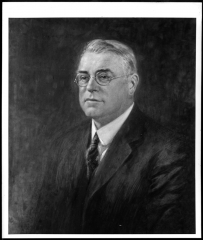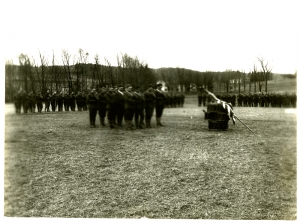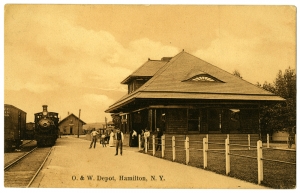teams, and careful preparation and skillful coaching, all joined to produce outstanding achievements. Intercollegiate opponents included many of the leading Eastern institutions but Ohio Wesleyan was a perennial rival. Colgate made forensic history in 1917 by being the first men’s college to debate a team from a women’s school, the occasion being a contest with Vassar in which, by previous agreement, no decision was rendered.
Two new publications appeared on campus in the ’20’s. The first was Banter, typical of the contemporary college humor magazine with its jokes, often borrowed, drawings, and slick, bright covers. The first number with Henry N. Burke, ’21, as editor, ‘came out for the 1920 Junior Prom. The second publication, The Willow Path, was a student venture sponsored by the English Department to afford an outlet for undergraduate literary productions. It began in the spring of 1922 with a sizeable issue of 82 pages; Horace A. Woodmansee, ’22, was Managing Editor. The Madisonensis, meanwhile, had undergone various transformations in format and with the April 8, 1916, number became The Colgate Maroon.

As early as 1913 some undergraduates had built a “wireless apparatus” in Lathrop Hall and formed the “Radio Club of Colgate” to study radio communication and operate the station. Within a year, however, the group had reorganized as the Physical Society, a departmental club, and their initial interest was absorbed into a wider program.
Outdoor recreation was promoted by the Outing Club established in 1914 with the assistance of Professor Goodhue and patterned after a similar group at Dartmouth. Its emphasis was primarily on winter sports and in 1915 members represented Colgate at Dartmouth’s ski and snowshoe meet and winter carnival. Apparently their experience led the club, with fraternity cooperation, to sponsor a similar meet and a dance at Colgate a few weeks later, thus beginning the local Winter Carnival tradition. The club also promoted ski hikes and weekend trips to Big Moose Lake in the Adirondacks.
By 1910 Patrons’ Day was no longer observed and the students had taken over the occasion for Junior Prom, “the” social event of the year. One of its features, introduced in 1912, was the Freshman Circus in which the first-year men exercised their ingenuity in burlesquing faculty, students, and campus happenings.
Interclass rivalry continued to give zest to student life. The Mercury








